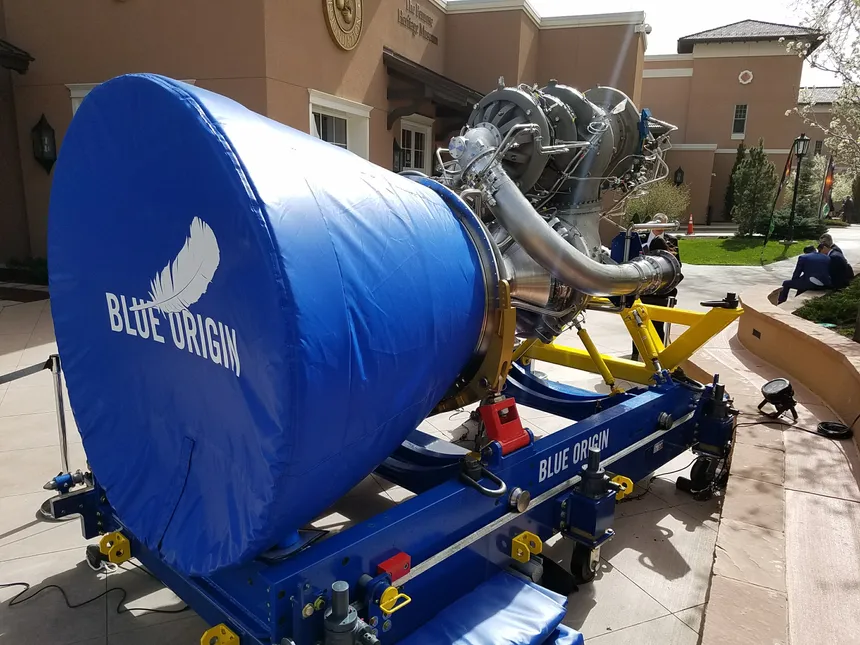Blue Origin, the private aerospace manufacturer and spaceflight services company founded by Jeff Bezos, has successfully completed the first hotfire test of its next-generation BE-4 rocket engine. The test, which took place at the historic Test Stand 4670 in Huntsville, Alabama, saw the engine produce up to 550,000 pounds of thrust, making it Blue Origin’s most powerful engine to date.
The BE-4 engine is a critical component of Blue Origin’s spaceflight ambitions, powering not only its own reusable New Glenn rocket but also United Launch Alliance’s (ULA) new Vulcan Centaur rocket. In fact, the BE-4 engine made its maiden flight just weeks ago, powering the Peregrine Mission 1 for Astrobotic Technology.
The hotfire test is a significant achievement for Blue Origin, coming just months after a setback in June when a similar BE-4 test at the company’s facility in West Texas ended abruptly in an explosion. The successful test offers additional confirmation of the BE-4’s reliability, paving the way for further testing and development.
The BE-4 engine is designed to provide Blue Origin with the power it needs to launch its New Glenn rocket into orbit. With seven of the engines powering the booster, the New Glenn rocket will be capable of lifting payloads of up to 45,000 kilograms (100,000 pounds) into space. The engine’s high thrust-to-weight ratio and advanced materials make it an ideal choice for Blue Origin’s heavy-lift launch vehicle.

Blue Origin’s BE-4 Engine Powers Its Way to Success
In addition to powering the New Glenn rocket, the BE-4 engine will also be used in ULA’s Vulcan Centaur rocket. This partnership is significant, as it marks the first time that Blue Origin’s engine technology will be used in a production launch vehicle. The Vulcan Centaur rocket, which uses two BE-4 engines in its first stage, is designed to provide ULA with a more powerful and efficient launch vehicle for a wide range of missions.
The BE-4 engine is not only important for Blue Origin’s launch vehicle ambitions but also for its spaceflight goals. The company has selected the New Glenn rocket to fly its Blue Moon lander to the moon as part of NASA’s Artemis mission, which could take place before the end of the decade. The Blue Moon lander, designed to land on the lunar surface, will be a critical component of NASA’s lunar exploration program, and the New Glenn rocket will be responsible for delivering it to the moon.
In another significant development, Blue Origin has announced plans to use its New Glenn rocket to launch up to 27 missions to deploy Amazon’s Project Kuiper internet satellites in the coming years. This initiative, similar to SpaceX’s Starlink service, aims to provide high-speed internet access to remote and underserved communities around the world.
The BE-4 engine’s successful hotfire test marks an important milestone in Blue Origin’s development program. As the company continues to refine its engine technology and prepare for the launch of its New Glenn rocket, the BE-4 engine will be at the heart of its spaceflight ambitions. With its high thrust-to-weight ratio, advanced materials, and reliability, the BE-4 engine is poised to play a critical role in Blue Origin’s future missions, from lunar exploration to internet satellite deployment.









































